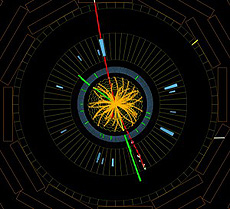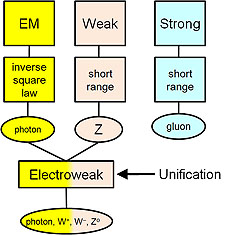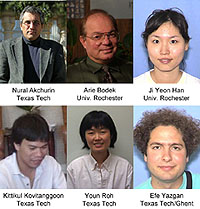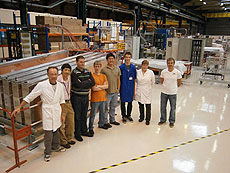|
Have a safe day!
Friday, Aug. 3
3:30 p.m.
DIRECTOR'S COFFEE BREAK - 2nd Flr X-Over
THERE WILL BE NO JOINT EXPERIMENTAL-THEORETICAL PHYSICS SEMINAR THIS WEEK
Monday, Aug. 6
1:30 p.m.
Particle Astrophysics Seminar (NOTE TIME, LOCATION) - Hornets' Nest, WH8XO
Speaker: Vuk Mandic, University of Minnesota
Title: Searching for Stochastic Gravitational Wave Background with LIGO
3:30 p.m.
DIRECTOR'S COFFEE BREAK - 2nd Flr X-Over
4 p.m.
All Experimenters' Meeting - Curia II
Special Topics: Shutdown Work Status and Plans; NOvA Detector Assembly and Installation; MTA Progress and Plans
Click here for NALCAL,
a weekly calendar with links to additional information.
Upcoming conferences |
|
Friday, Aug. 3
- Breakfast: chorizo burrito
- New England clam chowder
- Carolina burger
- Tuna casserole
- Dijon meatballs over noodles
- Bistro chicken & provolone panini
- Assorted sliced pizza
- *Brazilian beef w/ chimichurri
*Carb-restricted alternative
Wilson Hall Cafe Menu
|
|
Friday, Aug. 3
Dinner
Closed
Wednesday, Aug. 8
Lunch
- Barbecue ribs
- Potatoes fontecchio
- Cucumber salad
- Espresso coupe
Chez Leon Menu
Call x3524 to make your reservation.
|
|
symmetry available online
The August issue of symmetry magazine is now available online, featuring stories on the Intensity Frontier, the role of high-energy physics in big data and the Higgs Photoshop contest winners. To get future issues delivered directly to your inbox once a month, subscribe to the symmetry email update list.
|
Physicists show strengthened signals of Higgs-like particle in publications
 |
Protons collide in the CMS detector at 8 TeV, forming Z bosons that decay into electrons (green lines) and muons (red). Such an event is compatible with the decay of a Standard Model Higgs boson. Image: CMS
|
The CMS and ATLAS experiments at CERN's Large Hadron Collider released papers Tuesday confirming their earlier simultaneous, independent discovery of a particle that resembles the Standard Model Higgs boson.
The ATLAS paper reports the observance of a Higgs-like particle with a 5.9 sigma confidence level, up from the 5.0 sigma reported on July 4.
The CMS paper likewise reports a Higgs-like particle, with a 5-sigma level of confidence.
"We believe that what we have observed will be shown to be an elementary spinless particle," CMS Spokesperson Joe Incandela said. "This is something we have never seen before and really important to study in detail. We are going to see a lot of creativity in trying to get at a better understanding of its properties. It's a great achievement for the field and an important milestone in human intellectual history."
The Higgs boson, when created in a particle collision, can decay into different combinations of lighter particles. The CMS paper uses data from 2011 and 2012 to examine the new particle in five decay channels; the ATLAS paper examines five channels with 2011 data and three main channels with 2012 data. Analysis with 2012 data of the third of these channels, in which the particle decays to two W bosons, is new for the ATLAS paper.
Both collaborations found the mass of the heavy new particle to be about 125 to 126 GeV, more than 134 times the mass of a proton.
Last week Fermilab's CDF and DZero collaborations released a joint paper with their updated Higgs search results. The Tevatron experiments report evidence, with a significance of about 3 sigma, for a particle in the same mass region using the decay channel in which the particle decays to a bottom quark and its antiparticle, which is produced differently at the Tevatron than at the LHC.
Read more
—Signe Brewster
|
Fermilab director steps down
From Nature News Blog, Aug. 3, 2012
Pier Oddone, the director of the Fermi National Accelerator Laboratory in Batavia, Illinois, announced today that he would be stepping down from the post he has held since 2005. He will stay on until July 2013. "It's time for the new generation," says Oddone. "I don't believe in old war horses."
Oddone says he would like to be remembered for putting in place a transition plan for the lab, which lost its signature machine with the retirement of the Tevatron in 2011. He says he would have retired earlier this year, but he first had to deal with a difficult presidential budget request, and he also wanted to develop a phased plan for the embattled Long-Baseline Neutrino Experiment, which is key in the lab's shift from the energy frontier to the intensity frontier.
Read more
|
Cosmic rays still mysterious 100 years after discovery
From space.com, Aug. 1, 2012
Cosmic rays continue to puzzle scientists a century after the fast-moving particles were discovered.
Austrian scientist Victor Hess first cottoned on to the existence of cosmic rays after a high-altitude balloon flight on Aug. 7, 1912. In the 100 years since, researchers have learned a lot about these highly energetic particles, which constantly bombard Earth from outer space. But important questions remain, including where exactly they come from.
Scientists got on the trail of cosmic rays in the 1780s, when French physicist Charles-Augustin de Coulomb noticed that an electrically charged sphere spontaneously lost its charge. This seemed strange, because at the time scientists believed air to be an insulator rather than a conductor.
Further experiments demonstrated, however, that air becomes a conductor when its molecules are ionized — given a net positive or negative electrical charge — by interaction with charged particles or X-rays.
Read more
|
|
Old-school electroweak
 |
| Of the three forces we understand in the subatomic realm, the electromagnetic and weak forces are said to be unified, resulting in the electroweak force. |
For centuries, scientists have been showing that seemingly disparate phenomena are really one and the same. In the late 1600s, Isaac Newton showed that the force that keeps us on the ground is the same as the one that governs the motion of the heavens. We now know this as Newton's theory of universal gravity. In the 1800s, a series of experimental and theoretical studies culminated in the blending of our understandings of electricity and magnetism into the theory of electromagnetism. The 1960s was the era in which electromagnetism and the weak nuclear force were found to be two different facets of a combined force that we now call the electroweak force. The Higgs boson was invented as a way to smooth out a few technical kinks that were encountered in the process of uniting these two theoretical models.
However, long before the recent Higgs excitement, scientists were exploring this melding of the two forces in other ways. One of the features of electromagnetism is that if you replaced left with right and right with left everywhere in the theory, you wouldn't notice the difference. In contrast, the weak force has very different behavior. If you swapped the right and left in equations of the weak force, the new equations would predict behavior that has never been observed. Thus studying what happens when you swap left and right in electroweak studies is a way to investigate which aspect of the two forces, electromagnetism or the weak force, dominates as collision conditions change. We look at the production and subsequent decay of a particle we call a Z/γ, which is written this way to denote that in electroweak theory we cannot identify whether a particle is a Z boson or a photon. This may very well be confusing, as a Z boson is massive and a photon is massless. It seems as though it would be easy to distinguish between the two, but we are talking here about the quantum realm. In this subatomic world, the mass of a particle is often different from our simple expectations, resulting in massive photons and Z bosons with unusual masses.
CMS physicists studied events in which a Z/γ was produced and subsequently decayed into an electron or muon matter-antimatter pair. They studied the direction of the trajectory of the matter decay particle compared to the trajectory of the Z/γ to see if they tended to be in the same or opposite directions. Electroweak theory can predict this variable, and observing a difference could be the sign of new physical phenomena, including the existence of a new and heavier cousin of the Z boson. The data were in excellent agreement with the Standard Model, so there's no new physics yet. However, as the data set increases, it will be possible to repeat the measurement with higher precision.
—Don Lincoln
 |
| These physicists contributed to this analysis. |
 |
| The CMS Endcap Muon group is constructing additional cathode strip chambers at CERN. These chambers will augment the existing detector and increase its capabilities. Pictured here: P. Bulteau (Wisconsin), X. Yang (UCLA), S. Kreyer (UC-Santa Barbara), M. Weber (UCLA), E. Takasugi (UCLA), J. Beres (UCLA), C. Farrow (Wisconsin), A. Lanaro - Manager (Wisconsin). |
|
|